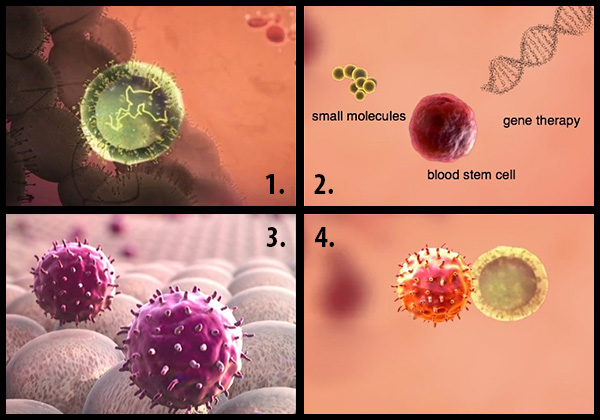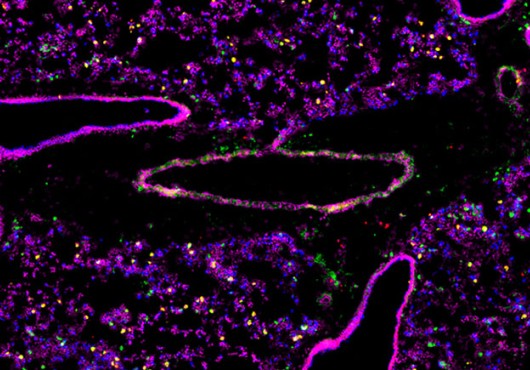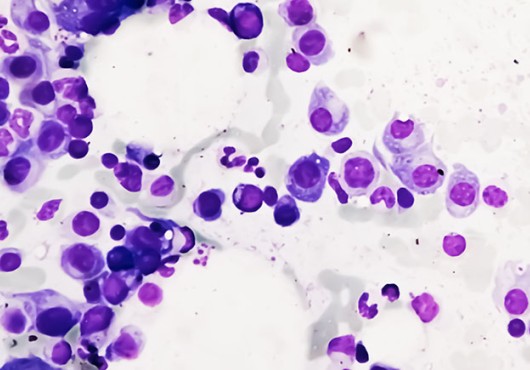
Harvard Medical School researchers at Boston Children’s Hospital have reversed type 1 diabetes in mice by infusing blood stem cells pretreated to produce more of a protein called PD-L1, which is deficient in mice and people with type 1 diabetes.
The stem cells curbed the autoimmune reaction in cells from both mice and humans and reversed hyperglycemia (high blood sugar) in diabetic mice.
Almost all the mice were cured of diabetes in the short term. One third maintained normal blood sugar levels for the duration of their lives.
The findings were published Nov. 15 in Science Translational Medicine.
“There’s really a reshaping of the immune system when you inject these cells,” said the study’s senior investigator, Paolo Fiorina, lecturer on pediatrics, part-time, at HMS and research associate in the Division of Nephrology at Boston Children’s.
The study showed that when given to mice, the treated stem cells homed to the pancreas where islet cells are made—the insulin-producing cells that are destroyed by the body’s own immune defenses in type 1 diabetes. The treatment was effective whether PD-L1 production was stimulated through gene therapy or pretreatment with small molecules.
The powers of PD-L1
Previous studies have tried using immunotherapies for type 1 diabetes, aiming to curb the autoimmune attack on islet cells. These attempts have failed, in part because the therapies have not specifically targeted diabetes.
Autologous bone-marrow transplant—infusing patients with their own blood stem cells to reboot their immune system—has helped some patients, but not all.
“Blood stem cells have immune-regulatory abilities, but it appears that in mice and humans with diabetes, these abilities are impaired,” said Fiorina. “We found that in diabetes, blood stem cells are defective, promoting inflammation and possibly leading to the onset of disease.”
A team led by Fiorina and first author Moufida Ben Nasr, HMS research fellow in pediatrics at Boston Children’s, began by profiling the so-called transcriptome of blood stem cells to find out what proteins the stem cells make.
Using a gene expression microarray, they found that the network of genetic regulatory factors, or microRNAs, controlling production of PD-L1 is altered in blood stem cells from diabetic mice and humans. This prevents production of PD-L1, even early in the disease.
They further showed that PD-L1 has a potent anti-inflammatory effect in the context of type 1 diabetes.
PD-L1 is known as an immune checkpoint molecule. It binds to the PD-1 (inhibitory programmed death 1) receptor on the inflammatory T-cells that are activated to cause autoimmune reactions. This causes the T-cells to die or become inactive.
When Fiorina, Ben Nasr and colleagues introduced a healthy gene for PD-L1 into the stem cells, using a harmless virus as the carrier, the treated cells reversed diabetes in the mice.
Fiorina and colleagues also found they could achieve the same effect by treating the cells with a cocktail of three small molecules: interferon beta, interferon gamma and polyinosinic-polycytidylic acid.
“We think resolution of PD-L1 deficiency may provide a novel therapeutic tool for the disease,” Ben Nasr said.
Future directions
Although the therapy works in mice, it is not guaranteed to translate into humans. Further study will also be needed to determine how long the effects of the cell therapy last and how often the treatment would need to be given.
“The beauty of this approach is the virtual lack of any adverse effects, since it would use the patients’ own cells,” said Fiorina.
In collaboration with scientists from biopharmaceutical company Fate Therapeutics, Fiorina and colleagues are working to optimize their small-molecule cocktail to modulate blood stem cells. The team has completed a pre-investigational new drug meeting with the U.S. Food and Drug Administration to support the conduct of a clinical trial in type 1 diabetes.
The study was funded by the EFSD (European Foundation for the Study of Diabetes)/Sanofi European Research Programme, an American Heart Association grant-in-aid and Fate Therapeutics. Boston Children’s Hospital and Fate Therapeutics have filed intellectual property covering pretreatment of blood stem cells for immunoregulation.
HMS coauthors included Vera Usuelli, research fellow in pediatrics at Boston Children’s; Christian Schuetz, HMS instructor in surgery at Massachusetts General Hospital; James Markmann, the HMS Claude E. Welch Professor of Surgery at Mass General; and Leonard Zon, professor of stem cell and regenerative biology at Harvard University and the HMS Grousbeck Professor of Pediatrics at Boston Children’s. Additional coauthors were based in Milan and Padua, Italy, and Gainesville, Florida.
Adapted from a Boston Children’s news release.





